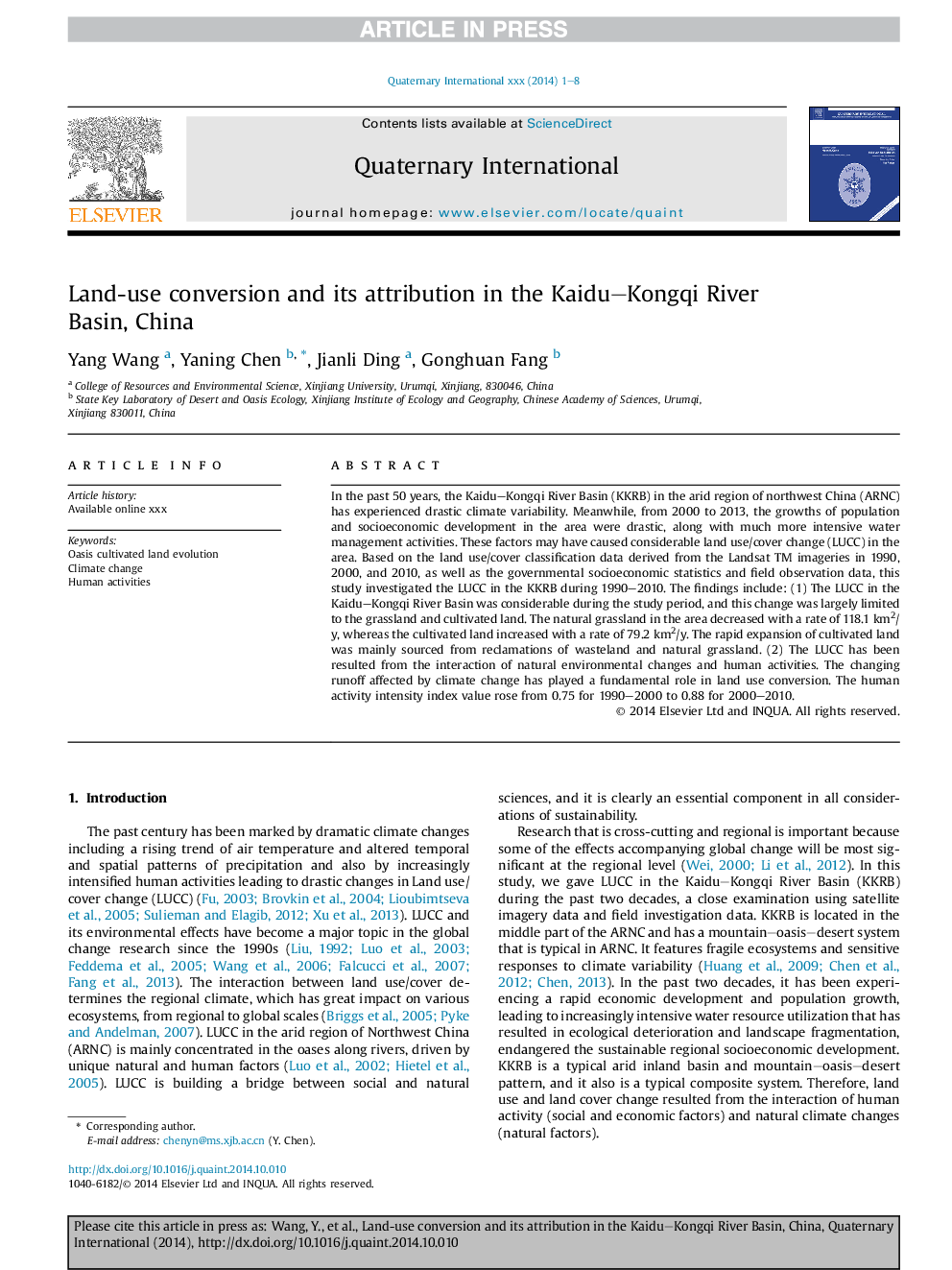| Article ID | Journal | Published Year | Pages | File Type |
|---|---|---|---|---|
| 7451531 | Quaternary International | 2015 | 8 Pages |
Abstract
In the past 50 years, the Kaidu-Kongqi River Basin (KKRB) in the arid region of northwest China (ARNC) has experienced drastic climate variability. Meanwhile, from 2000 to 2013, the growths of population and socioeconomic development in the area were drastic, along with much more intensive water management activities. These factors may have caused considerable land use/cover change (LUCC) in the area. Based on the land use/cover classification data derived from the Landsat TM imageries in 1990, 2000, and 2010, as well as the governmental socioeconomic statistics and field observation data, this study investigated the LUCC in the KKRB during 1990-2010. The findings include: (1) The LUCC in the Kaidu-Kongqi River Basin was considerable during the study period, and this change was largely limited to the grassland and cultivated land. The natural grassland in the area decreased with a rate of 118.1Â km2/y, whereas the cultivated land increased with a rate of 79.2Â km2/y. The rapid expansion of cultivated land was mainly sourced from reclamations of wasteland and natural grassland. (2) The LUCC has been resulted from the interaction of natural environmental changes and human activities. The changing runoff affected by climate change has played a fundamental role in land use conversion. The human activity intensity index value rose from 0.75 for 1990-2000 to 0.88 for 2000-2010.
Keywords
Related Topics
Physical Sciences and Engineering
Earth and Planetary Sciences
Geology
Authors
Yang Wang, Yaning Chen, Jianli Ding, Gonghuan Fang,
